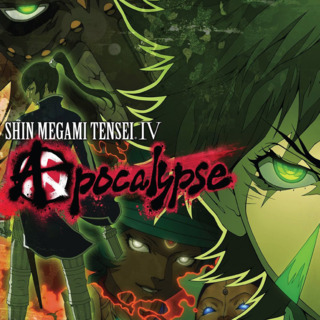1. This isn't really a sequel to the original Shin Megami Tensei IV. It is more of a standalone expansion. If it were a TV show, I think I'd call it a spinoff. It's a concurrent story, set in the same location where the major characters from the original make appearances but aren't the main focus.
2. By set in the same location, I mean the exact same location. They don't just re-use the engine but the majority of gameplay locations as well. Huge swatches of the map are ripped more or less exactly from Shin Megami Tensei IV. It is honestly a bit much for a full priced game to re-use quite so much content but given this series is kind of a niche thing, I will give developers, Atlas, a mulligan this time. This time.
3. To say the plot of this is over-the-top is a bit of an understatement. Your character, who goes by the name, Namashi is killed very early on. A god brings him back from the dead and he and his wily band of friends are henceforce hopelessly enmeshed in a battle between angels and demons in a post-apocalyptic hellscape. So, yeah, it's a JRPG.
4. The atmosphere is set quite nicely by the music. It is at least mostly new and I constantly found myself w/ the song from whatever area I was in stuck in my head.
5. Presentation generally is great, I'd say. It is kind of obnoxious that most characters are represented exclusively by an unanimated sprite that in some cases does not even change based on what they are saying but it all works pretty well. On handheld, it feels like reading some kinda crazy interactive book.
6. Gameplay here is pretty old school. Turn-based battles occur after not-quite-random encounters. As per series standard, you recruit a team of demons to fight other demons. Combat focuses primarily on harping on enemy weaknesses, which give you extra turns, which lets you continue to harp on enemy weaknesses. I found that shortly after entering most dungeons, I was defeating most mobs in a single turn on the default difficulty.
7. Speaking of difficulty, the higher difficulty levels here just give the enemies higher stats and more hit points. I always feel like this is a bit lazy. You don't lose anything by turning the difficulty down, really, just save some time grinding. At higher difficulties, some bosses will require you go out and recruit a new set of demons to fine tune your attacks. The strategy never gets to much more complicated than, "spam your strongest magic at their weaknesses" or "buff and de-buff like crazy" though.
8. Not gonna lie: I turned the difficulty down on later dungeons. This is a great game for forty hours but it is much longer than forty hours long.
9. Ultimately, the mechanic that pulls you in is recruiting demons which can then be combined and fused into more demons, which you then fuse into yet more demons. As the game drags on, some of the dungeons get long enough that you actually run out of new demons to recruit and fuse and the game starts to feel stuck in the mud outside of story cut scenes.
10. The last dungeon esp. gets incredibly long and you can't recruit demons there at all, meaning a core game mechanic is absent for hours and hours of endgame play.
11. There are like four different endings to this. I only bothered to get one of them. See number 10.
12. In all fairness, I was super focused on demon recruitment for my playthrough. I think I could have possibly breezed through much faster had I spent less time recruiting and fusing ever possible demon but recruiting and fusing high-level demons seemed to be the most effective route for building a strong party so I felt I was lead down that path.
13. For fans of the series, this is highly recommended, despite my mediocre score on this review. It does a great job of fleshing out the original series and elaborating on its themes. Demon recruitment is as fun and addictive as ever and there are some minor improvements to gameplay which are worth checking out. If you like, SMT: IV, you will like this just as much if not more. People new to the series, can probably check out either/or. They are very similar games in terms of presentation and mechanics.

